We paused our three-week tour around Sicily to visit other islands, the Aeolian Islands. Named after the Greek wind god Aeolus, these seven islands are just a short ferry ride from the northeastern tip of Sicily. Sprinkled like glitter in the Tyrrhenian Sea forming a Y-shaped cluster, these islands, also known as the Lipari Islands, are all a result of volcanic activity and are a UNESCO World Heritage Site.
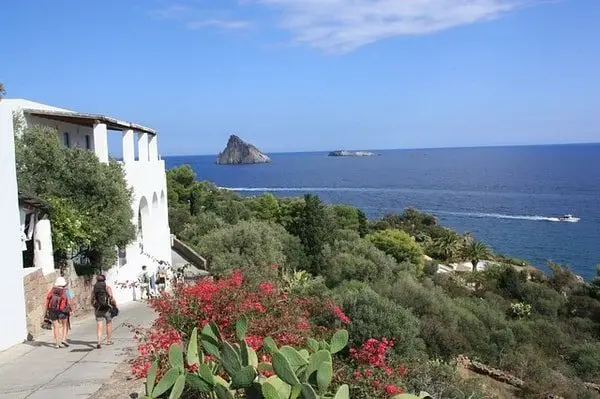
We went for some relaxing beach time, a sort of vacation from our vacation, because we had heard the waters around the islands are some of the most beautiful in all of the Mediterranean. Besides the beautiful blue waters, all the other natural elements – earth, wind and fire – play a part in the history and beauty of this place. Each island possesses its own unique appeal.
Lipari is the largest of the Aeolian islands. The main town, also called Lipari, is sectioned in two by the port. On one side is a promenade and long stretch of pebble beach, Marina Lunga; the other side is the town center and a smaller fisherman’s marina, Marina Corta. For history buffs, Lipari has an archaeology museum. If you’re a more adventurous type, you can scuba dive or rent a scooter and discover the rest of the island.
Some of the cliffs of Lipari are coated in white pumice, resulting from the volcanic activity. Others are filled with black obsidian, once used to make sharp tools and knives. Now it is sold in a variety of shapes as jewelry in souvenir shops. Nightlife on Lipari is a casual one. It might include a passegiata along corso Vittorio Emanuale, dinner al fresco, and sitting at outdoor cafes sipping lemon granita cocktails. In addition to the Lipari sights, we opted for an excursion to the other Islands.
It was mid-September, just after the July and August rush, so we took a “special” tour that included a trip around Vulcano before heading off to Panarea and Stromboli. There were two ladies from Milan in the seats next to us who helped translate the history and information the captain gave as we coasted along. It was as if we had our own private guides.
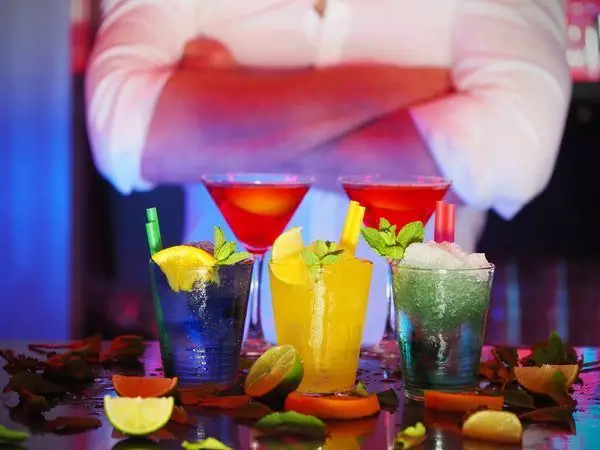
The island Vulcano gets its name from the mythological god of fire. Mythology tells that the volcano on this island was the chimney to Vulcano’s underground workshop. Below the smoldering ashes, Vulcano wielded weapons for Mars. In reality, the island’s volcano still sends out sulphuric clouds of smoke, smells like rotten eggs, and is most popular for its mud baths and thermal waters. We saw people covered in mud from head to toe. After they took a dip in the mud bath, they would dip into the sea to rinse off in the Jacuzzi-like waters. You can also climb to the Gran Crater for a close-up view of the smoldering volcano.
On our way to Panarea, we passed Salina, the greenest of the islands. Salina was created from six volcanoes; however, the Greeks named it “Didyme” (the twins) because it looks like two volcanoes melded together to form the island. It is covered with greenery. More than 400 types of plants grow on Salina, including vines that produce sweet Malvasia wine, bushes filled with capers, prickly pear producing cactus, and olive trees. Every year during the first week in June, there is a caper festival on Salina. It’s also the island where they filmed the movie, “Il Postino.”
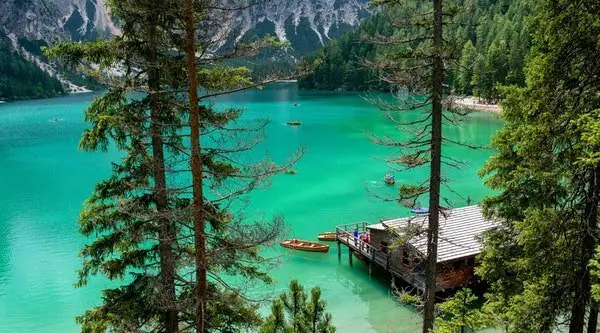
Before arriving at Panarea, we anchored off one of the coves for a swim in the clear waters. All of the islands have many coves and inlets. It seemed to be more popular to take a swim from a boat in these coves than from the shoreline.
Panarea is the island for the well-heeled, celebrities, and other Italian VIPs. There are several discotheques, and nightlife on Panarea is the liveliest of the islands. There are no cars; instead, you can roam the island on golf carts. We had only enough time to lunch at an outdoor café and walk along the promenade, glimpsing views of Stromboli and its smoky tip in the distance.
Back on the boat, we took a side trip to Basiluzzo and to see the bubbling fumaroles. Basiluzzo, sometimes identified as the eighth island, is really a volcanic rock formation emerging from the sea. Not inhabited, its craggy form stretches out about 500 meters.
Along with the side trip to Basiluzzo, we saw evidence of more volcanic activity. Far below the water’s surface, there are submarine volcanoes, still erupting and emitting hot gasses and steam, and bringing the water in some areas to boiling temperatures. The captain and crew pointed out these gurgling fumaroles on the water.
As my Milanese friend told me, “If the volcano below gets too angry, Kaboom! All of us in the boat is finito.”
After I heard that, I was ready to get moving. Our next destination was an island with an active volcano, really not much safer.
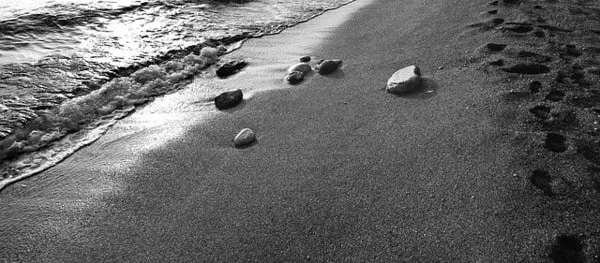
Stromboli is nicknamed the “lighthouse of the Mediterranean” because of its continuous fiery spurts. One entire side of the island is a flat black surface formed from eruptions of lava; the other side has courageous and/or crazy, inhabitants. On this side, white houses framed in pinks and purples of bougainvillea dot the hillside. The sand and pebbles that make up the beach are black. Crater climbing is a favored activity here.
We walked the island and circled our way up to the church. Our great adventure was snacking on cannoli while we watched the helmet-clad hikers get final climbing and safety instructions before their trek to Stromboli’s crater.
I liked our view of the evening “fireworks” much better. On our boat anchored in the sea, we safely saw the evening eruptions from a distance. Stromboli put on a show with a few small flames that burst up from its mouth.
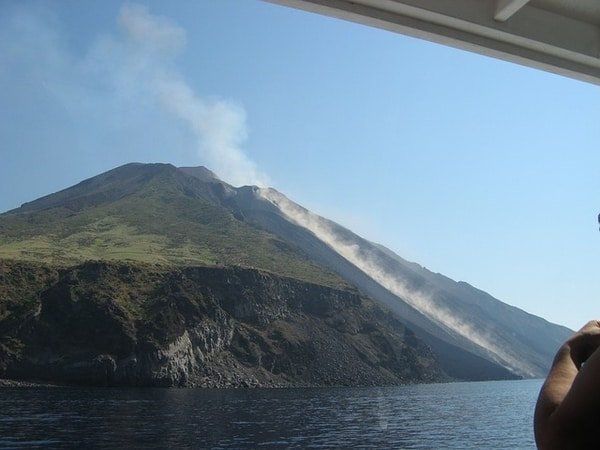
The tour finished with a ride back to Lipari under the moonlight. Our Milanese friends went downstairs to avoid the night chill and wind. One of the crew took on the role of tour guide and pointed out the “star” of Venus (actually the planet), and the Big and Little Dippers. We stayed above and gazed at the stars shining brightly in the dark night. They seemed almost within our reach.
On our ride back, we coasted over and by volcanic formations that started over 200,000 years earlier with the planet of Venus glimmering above. For a moment as fleeting as my life is in the scope of all this, I felt miniscule yet, at the same time still part of this universe of ours.
Useful Information:
The other two of the seven islands, Filicudi and Alicudi are the smallest and most remote. If you don’t feel like you’re at the end of the earth on any of the other islands, a trip to these two might do the trick. Full-day excursions to both of these islands are available and getting there is fairly easy. Hydrofoils and ferries leave from Palermo, Cefalu, and Milazzo in Sicily. From Italy’s mainland, ferries leave from Reggio Calabria, Messina, and Naples. Companies that offer ferry/hydrofoil service are:
Siremar (www.siremar.it)
SNAV (www.snav.it)
Ustica (www.usticalines.it)
NGI (www.ngi-spa.it)
There are numerous excursions to all the Aeolian Islands from Lipari, and several fishing excursions where you catch totani, calamari-like fish, and cook it aboard the boat. Two of the boat excursion companies from Lipari are:
Aliante (www.aliantetour.com)
Paloma (www.palomaeolie.it)
Stromboli Aeolian Islands | Sights | Top tourist sites to see
* all photographs by Kathy Ayer ©
Header Photo by nicolagiordano
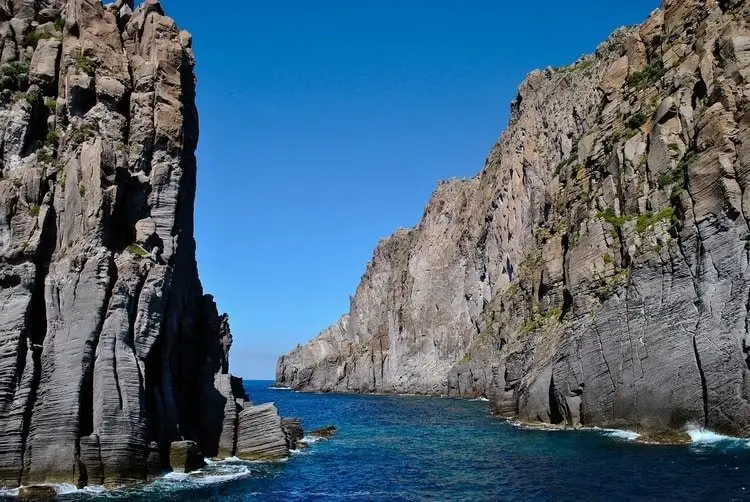
Beautiful Kathy. I can’t wait to research this destination further, your article has sparked my interest. Thank you!
I love it that your great adventure was “snacking on cannoli” as you watched the hikers get ready to scale the volcano 😉
Great article Kathy. I just got home from Athens (Greece) last night and one day we visited the island of Aegina. It was as beautiful as these Italian islands. Great experience!
Sounds absolutely wonderful!! I can’t lie…I’m so jealous of this trip Kathy! My favorite arancini place in Rome had painted the Aeolian islands on their wall & named many of the arancini after the different islands (the Stromboli was particularly good, lol)…ever since then, been dying to go! You article & stunning pictures re-confirm my desire, many thanks!
Hmm, I might head there at the end of my extensive tour of Italy which starts in just a week. Your article has sparked my imagination, I’m fascinated by vulcanos but might choose your option of admiring Stromboli from the water. Whilt snacking on cannoli, maybe???
Absolutely STUNNING, Kathy! I love this so much. On a very small scale it reminds me of my boat trip around Capri. I loved it! 🙂
Thanks all for the great comments, and am glad this piece could inspire travel to these remote little islands. Maybe not an adventure, but Sicilian cannoli are beyond comparison…it’s the sheep’s milk ricotta that cannot be replicated (believe I’ve searched, and searched and searched) outside of Sicily.
Tuula – So where is this arancini place in Rome? My favorite has been Mizzica in Piazza Bologna, but I’m pretty sure their tiles are painted with scenes of Mt. Etna and Catania. I’ll have to try your place when I’m there.
Inka – I hope you do make it down the boot and see the islands for yourself.
Such a beautiful part of Italy! Basiluzzo looks stunning rising out of the sea and the volcano puffing away reminds you of how volatile the serenity can be.
What a trip! I particularly liked the pictures of the volcano, which frankly I didn’t even know existed despite having been to Sicily!
This articles is packed with exciting adventures. Volcanoes, yummy cocktails, and your friendly translators? Sounds amazing 🙂
and if I were you, don’t do as I did – don’t kneel down under the water with all your weight – I burnt my knee quite badly!
Don’t forget you’ll have to throw the clothes you wear away when you return to civilisation on pain of being thrown out of everywhere….! That doesn’t just stink – that PONGS….!
Shaun would totally love to do something like this – he is/was a huge fan of mythological stories and history. How phenomenal to momentarily take your place in such a historic area.
ummm, yes please. Now! Damn, I am salivating.
The Aeolian Islands seem like a great place to visit! Beautiful photos!
These islands remind me of my beloved Greek islands, and that enough is reason to go. But then you tell me Postino was filmed there–one of my favorite scenic movies? Gotta go. Your trip sounds ideal in so many ways.